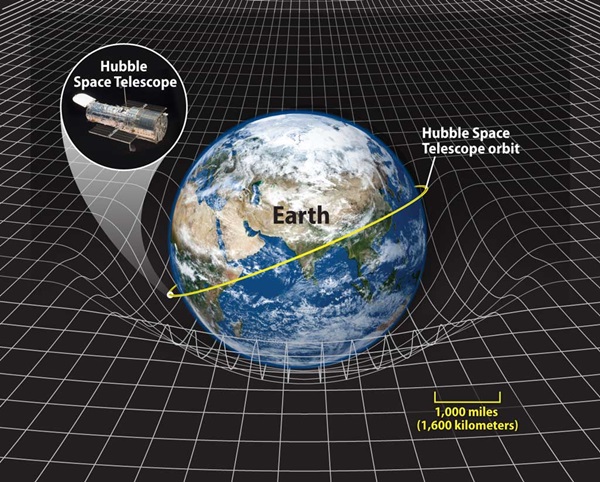Objects with mass warp space-time like you warp a trampoline’s surface when you step on it. When a photon is zipping through the universe, it has to follow the bends and curves of space-time — space-time is, after all, the only thing to travel through! So when the photon encounters a massive object, its path “dips” and “rises.” If you rolled a marble along the stepped-on trampoline, its path, too, would dip and rise. Photons, though they have no mass, exist in the universe, and where the universe is curved, they must follow.
Black holes bend space-time more than anything else in the universe because of their extreme densities. Think of satellites: If scientists want a satellite to stay in orbit, they have to send it up with a certain speed. If the speed is too low, it will fall back down to Earth. If it’s too high, it will keep on going out into space. The speed at which the satellite would continue into space is called the “escape velocity.” All of these effects are due to the actual curvature of space-time from Earth’s mass.
Black holes bend space-time more than anything else in the universe because of their extreme densities. Think of satellites: If scientists want a satellite to stay in orbit, they have to send it up with a certain speed. If the speed is too low, it will fall back down to Earth. If it’s too high, it will keep on going out into space. The speed at which the satellite would continue into space is called the “escape velocity.” All of these effects are due to the actual curvature of space-time from Earth’s mass.
At a certain distance from a black hole’s center, the escape velocity is faster than the speed of light, so photons that come within that distance follow space-time into the black hole and cannot escape.
Sarah Scoles
Associate Editor
Associate Editor










